Canada’s condo amenity wars
Competition for affluent condo buyers has developers piling on frills—car fleets, meditation walls and even perks that assuage the social conscience
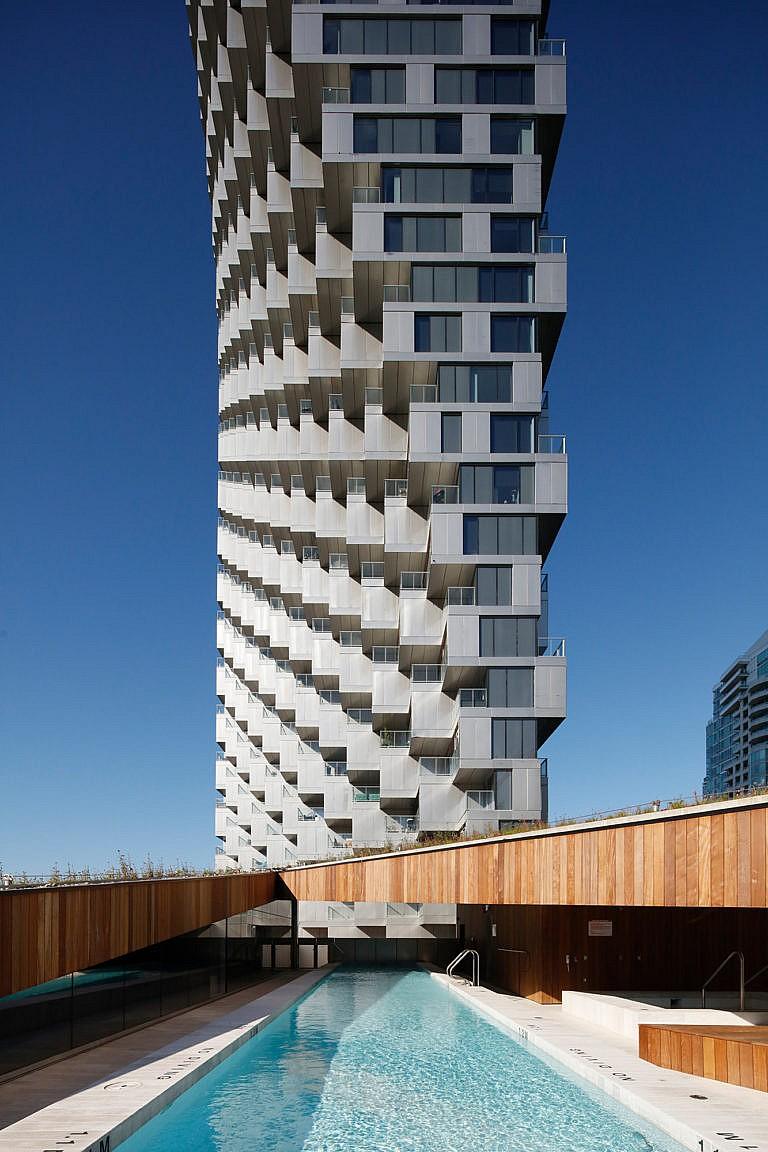
Vancouver House (Courtesy of Ema Peter/Westbank)
Share
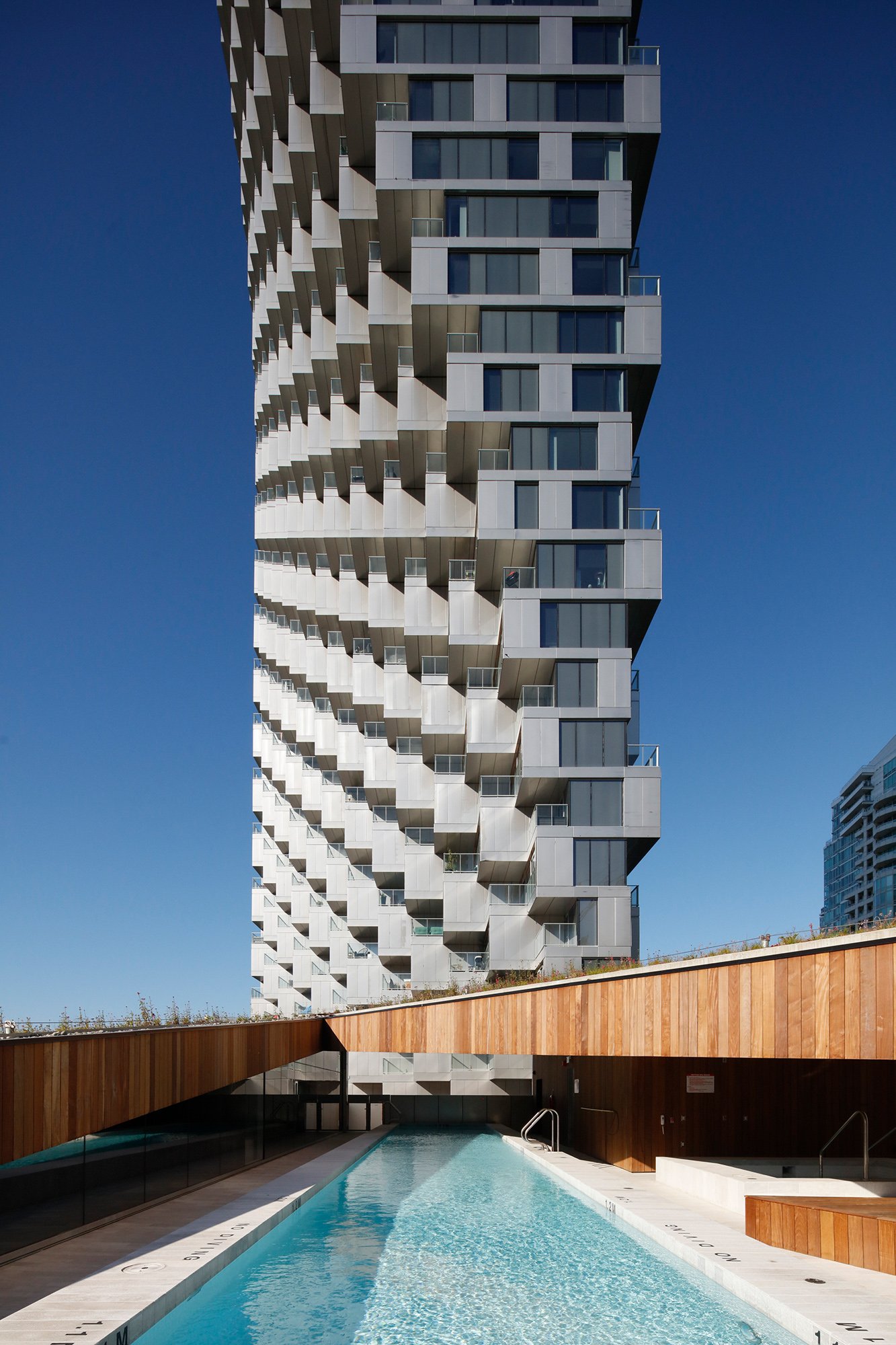
The marketing material for Vancouver House listed 20 reasons to buy a home inside the residential skyscraper overlooking False Creek. Among them: use of a fleet of BMWs; access to a 25-m heated rooftop pool configured so it’s sheltered from the wind yet lets in sunshine; and a 24-hour concierge trained to the same standard as those at the five-star Fairmont Pacific Rim hotel.
But when Allen Oram joined the project as part of the Westbank Development sales team in 2014—before the building broke ground—he was moved to buy a unit for himself, in part because of a more unique incentive located halfway around the world. For each of the units sold at the 370-residence Vancouver House, another home would be constructed in Cambodia for poverty-stricken families living near a garbage dump.
READ: Real estate photos are distorting reality, frustrating would-be home buyers
It was part of the developer’s partnership with the non-profit World Housing, and the one-to-one gifting model resonated with Oram. “In the early 2000s, I lived in and helped manage a low-income housing building for the city of Calgary,” he recalls. The position came with a rent-free suite, so he saved up for the deposit on his first home. Now, over a decade later, this was an opportunity to give someone else a house. And that wasn’t all.
Within months of his condo purchase, Oram was on a flight to Cambodia—an invitation extended to fellow condo buyers and the sales team (Oram paid for the trip himself)—where he personally handed over the keys to the family who moved into a modest home with a plaque that bears Oram’s name. “To walk through the slums and experience first-hand the living conditions these people were living in,” he says, “it’s one of these experiences where you feel good about giving back.”
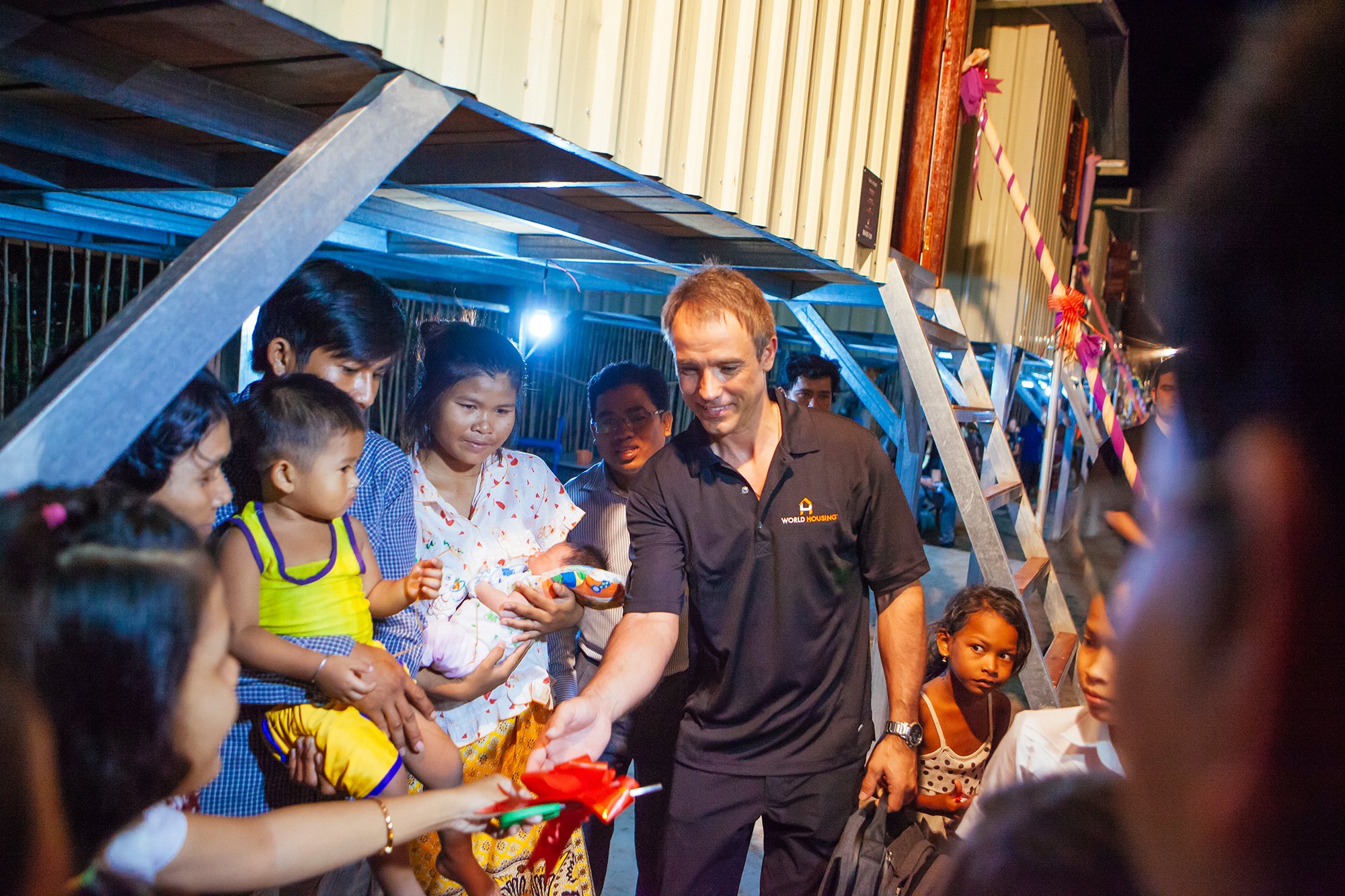
The initiative was a headline-grabber back home, winning plaudits for both the developer and the non-profit. “It changed the conversation away from countertops and square footage,” says Don McQuaid, managing director of World Housing. But from a cold-eyed market perspective, it was the latest gambit in an increasingly high-stakes race. As competition for young, high-income buyers heats up, developers are offering menus of amenities, perks and benefits that would have seemed unthinkable during the condo boom of the 1980s, when a party room and an indoor pool seemed sufficiently luxurious.
Like the Beemers and concierge, the social-housing venture reflects the affluent cosmopolitanism to which many buyers aspire. “It’s not always about location, but the lifestyle,” explains Ute Lehrer, a York University professor and expert in urban planning. “Amenities are front and centre as the vehicle to sell condo life.”
READ: When the dream of condo living turns into a dictatorial nightmare
Bigger projects in ever denser cities lead to more residents needing space outside their shrinking square footage. Small wonder, then, that the marketing of amenities often seems targeted at someone in need of a vacation. Spas. Massage rooms. Swimming pools and running tracks that jut out from the sides of buildings, as if one is floating above the city. Salt-rock meditation walls. Music studios. Race-car simulators. A concierge whose duties include helping residents make friends in the building.
“At some point, we started calling it the amenity wars,” says Tina West, who leads the property management division for commercial real estate services giant CBRE. “When you have 10 communities located within blocks of each other, it’s no longer about the address.”
***
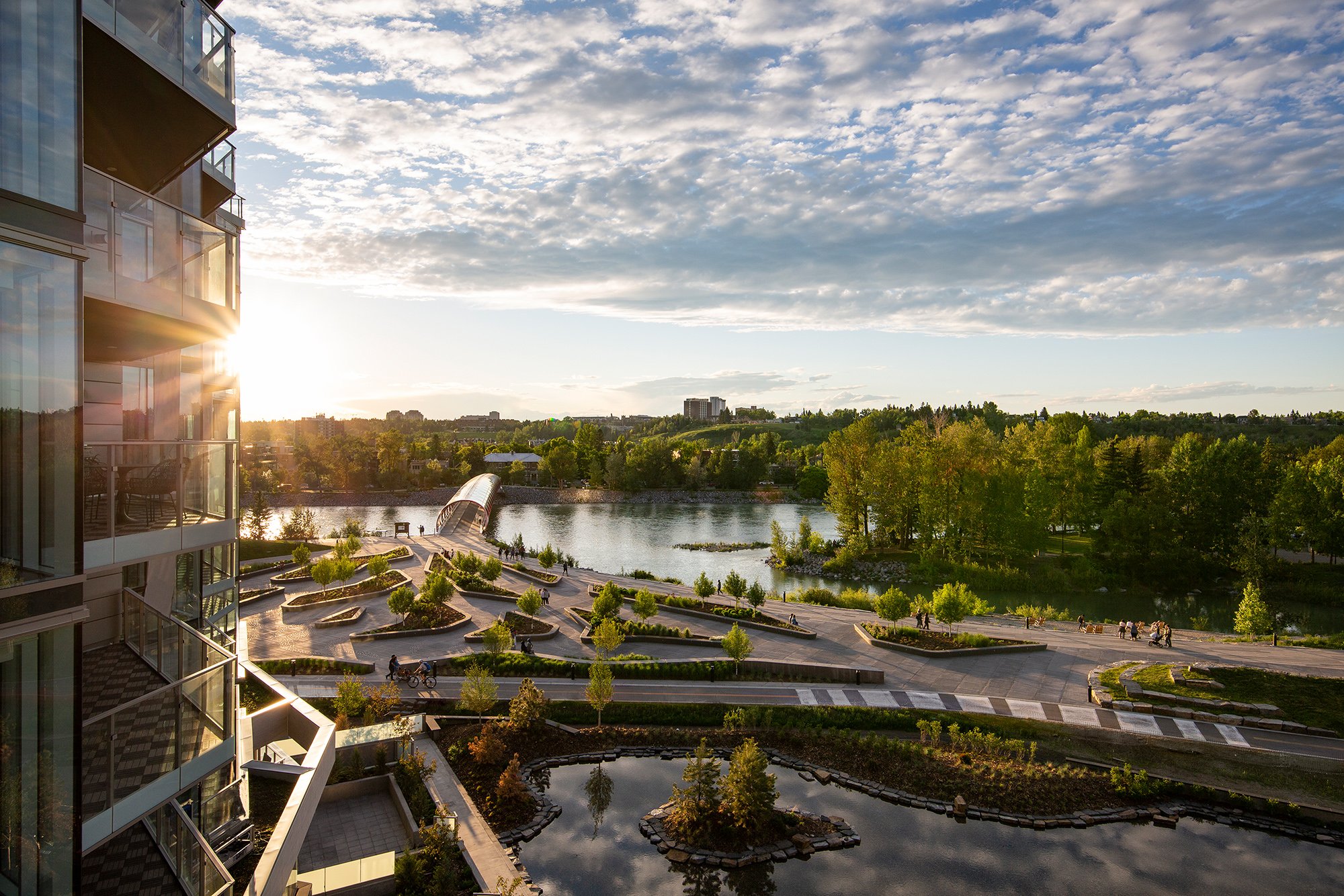
A newspaper advertisement for Toronto’s Bransfield House in the early 1970s spoke glowingly about each suite’s soundproof walls. It also mentioned the high-quality venting system, and each unit having its own utility room for wiring or plumbing. Among these mundane selling points, the indoor pool, gym and billiards room were treated as afterthoughts.
Fast-forward four decades and Vancouver-based Concord Pacific’s forthcoming multi-tower project in Burnaby, B.C., dubbed Metrotown, highlights its 66,000-sq.-foot “Sky Park” with amenities that include poolside barrel saunas, a conservatory, outdoor work pods, a yoga lawn, a tea house and a 400-m running track that lights up at night. For those looking to get some fresh air outside the condo doors, there’s a “gear room” on site where they can fix up their bicycles or camping equipment.
READ: Vancouver real estate is so crazy construction workers have to live under Skytrain tracks
“Lots of people in houses use their basement or garage as a room to tinker,” says Gabriel Leung, vice-president of development with Concord Adex, a Concord Pacific subsidiary. “This room is a lounge with equipment that will help them to go out more.” It’s certainly a boon to marketing teams. A couple of years ago, a Concord project in Seattle advertised its gear room as inspired by Tony Stark, the fictional billionaire industrialist behind the mask of Marvel superhero Iron Man.
The idea, says Jim Ritchie, executive vice-president of sales and marketing at Tridel, one of Canada’s major condo builders, is to “create a memory point” that will set a project apart: “Some of it is marketing, and often it’s understanding the needs of the consumer.” For Tridel, that means embracing technology, as it did with its first “smart condo” unveiled a few years ago in downtown Toronto. It includes keyless suite entry, an automated locker system for package deliveries and licence-plate recognition for access to the parking garage.
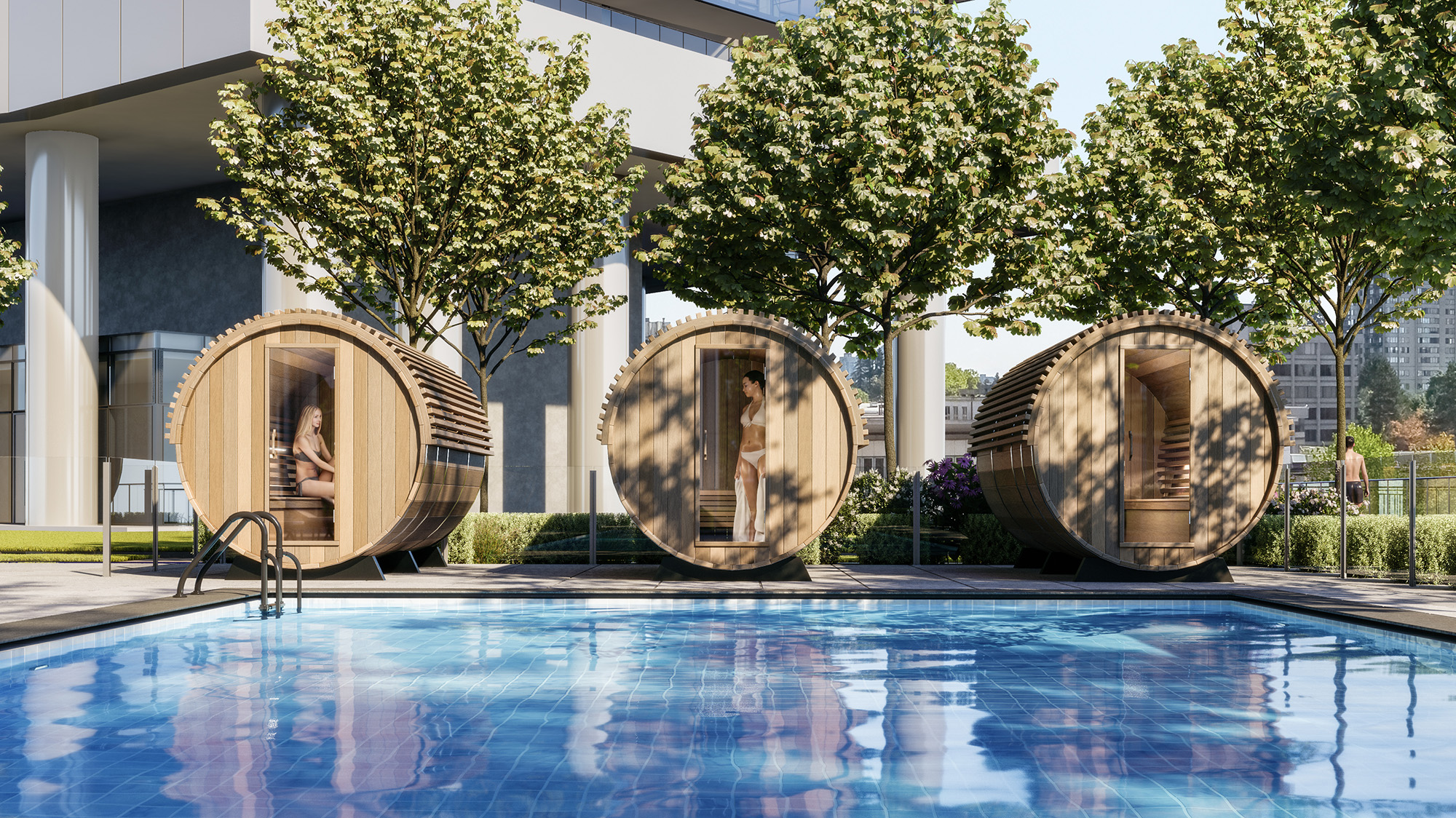
In the post-COVID world, Ritchie says, there will be a premium on reducing touchpoints as people move around their buildings. Among other things, Tridel is looking into systems that would allow residents to use their elevators without pushing buttons.
Another Toronto-based developer, Fitzrovia Real Estate, recently announced it is adding on-site virtual health care at one of its upcoming rental buildings; residents would have access to a private space with diagnostic equipment where they can chat with an on-call doctor.
A lot of these projects were conceived pre-pandemic—before renters unwilling to pay for downtown living when shops were shuttered began fleeing urban cores. Condo prices in Toronto slipped by a percentage point in the final quarter of 2020 after years of steady gains. Yet sales were up more than 20 per cent during that period, according to data from the Toronto Regional Real Estate Board. In Vancouver, average condo prices at the end of January had risen by five per cent over the previous year, to $896,000, while Ottawa’s average condo sale price in 2020 rose 19 per cent. “In a hyper-competitive market, that’s where marketing and amenities come into play,” says Jeanhy Shim, founder of Housing Lab Toronto, an independent housing research and consulting company. “You’re trying to get their attention.”
For smaller projects, designing from a different perspective can help. The all-female team behind Reina Condos in Toronto’s west end, for example, hopes to attract buyers from all stages of life—especially women whose needs are often overlooked in design. The Reina project will have a dedicated area for stroller parking on almost every floor. As kids get older, they’ll have access to a playroom that is visible from the gym through “a big, glass kind of bubble,” says Taya Cook, director of development at Urban Capital Property Group and one of the project’s lead developers.
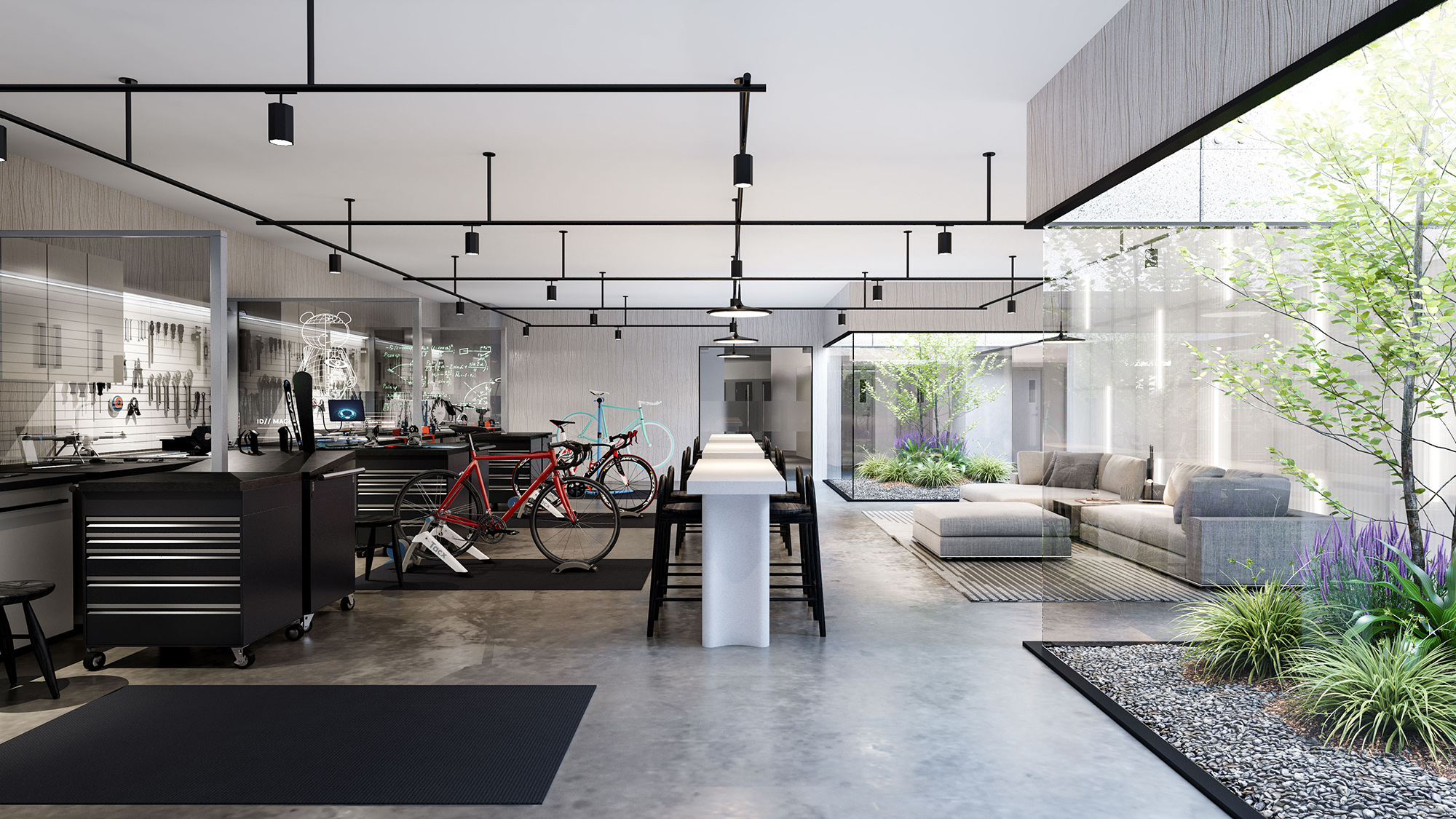
When CBRE put out a report on amenities to expect in the 2020s (published months before the pandemic), it pointed out that, with a growing number of people working from home, there will be demand for co-working spaces that feature both quiet rooms and tech-filled meeting areas. Standard gyms of yesteryear will give way to expansive fitness centres with dedicated spaces for barre or Pilates—or equipment like Peloton and Mirror, a smart mirror that streams fitness classes on demand, says CBRE’s West. A growing gaming culture will bring back full-sized retro arcade games of the ’80s—think Pac-Man. Rooms for a DIY generation might cater to those into welding, bike repair, gardening or even knitting.
But the report also emphasizes how “community is the new amenity.” In Calgary, the condo project Nude advertises itself not as a structure with 177 homes, but rather “an ecosystem” that is “curated by a community coordinator” who organizes events for residents, from Ping-Pong tournaments to rooftop garden gatherings. Two kilometres east on 14th Avenue SW, in one of Calgary’s newest downtown rental apartments, the Underwood has a “lifestyle concierge,” who helps introduce residents to neighbourhood cocktail bars, restaurants and shops.
“We always say if you have one friend at a property, your chances of moving out at the end of the lease go down 25 per cent,” says Mike Brescia, vice-president of the Calgary-based real estate company Western Securities, which developed the Underwood. “If you have two friends, it’s 50 per cent. If you have three friends, your chances of moving out are very low.”
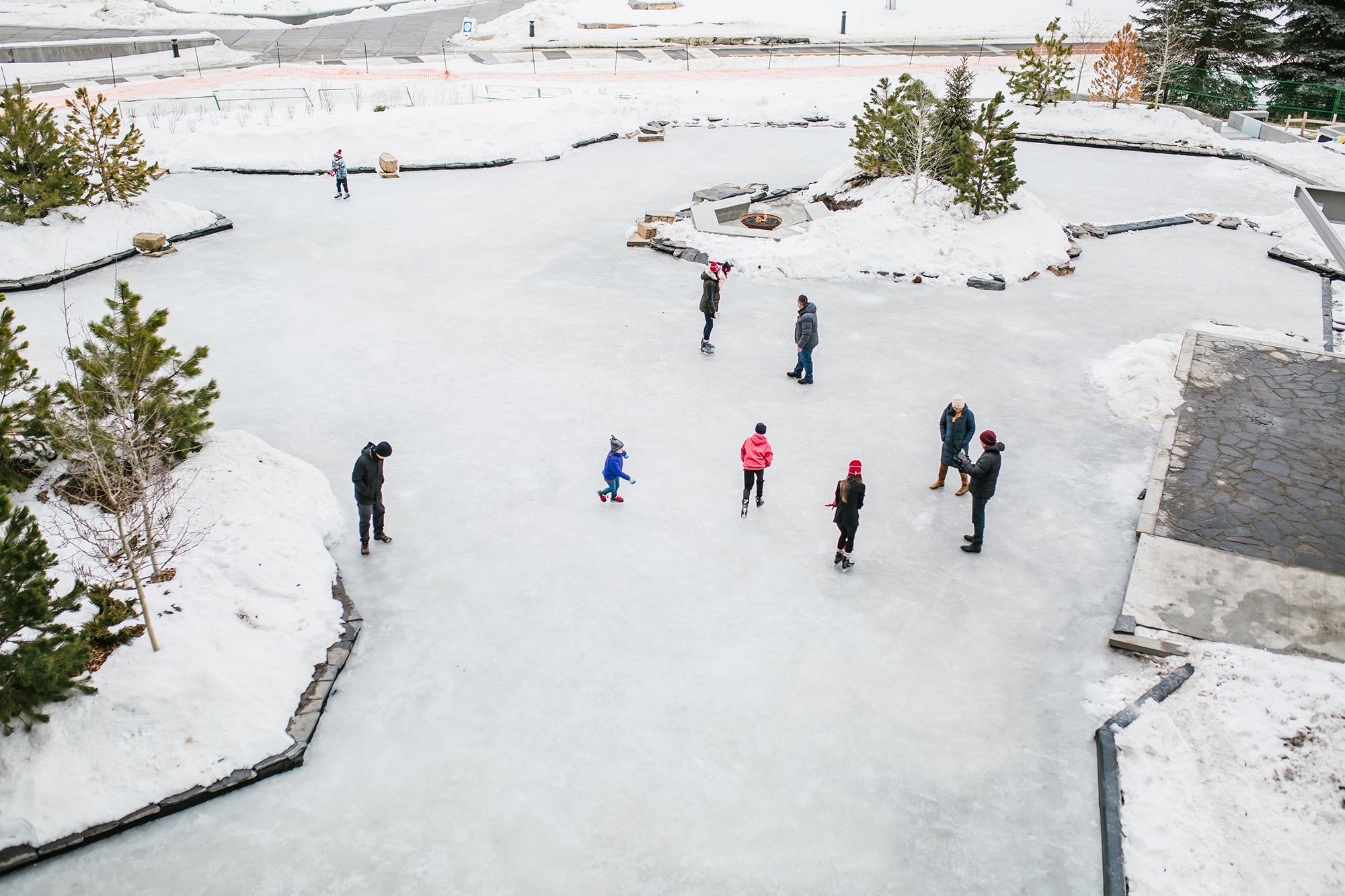
Many new condominium and apartment towers have enough units to populate an entire village—though the age demographic won’t be nearly as diverse. “The market is largely still people in their 20s, 30s, 40s; affluent, able-bodied people,” says Shim. “The amenities tend to reflect their needs.”
For luxury developers, according to a 2018 report from international real estate firm Engel & Völkers Americas, the target client is HENRY—an acronym for “high earner, not rich yet,” who is born in the ’80s or ’90s and has a household income exceeding US$100,000. How does one attract this person? While a survey of HENRYs found that condo finishes and location are most important, a majority confirmed that amenities are what define luxury. “We’re such a long way away from when we talked about making a building where the materials are durable and it doesn’t require much maintenance, and it has amazing light and ventilation,” says Matthew Soules, an associate professor at the University of British Columbia’s school of architecture. “It’s a shift to the pool, the BMW fleet and this obsession with crazy kitchen appliances. They’ll talk about the fridge, but not about what it’s like to live in the unit.”
To Lehrer, the York professor, there is irony in city dwellers embracing a lifestyle surrounded by amenities. “It’s presented as urban, while at the same time it destroys the urban in the city,” she says. Lehrer points to swimming pools: as a growing number of condo developments offer their own pools, there is less support for funding public ones and, gradually, those without the means to afford condo living enjoy less access to swimming; as a result, everyone mixes less, and the community as a whole suffers for it.
The same goes for the libraries or dog parks now turning up in condo complexes, she says. “There’s a downward spiral for supporting public amenities when we have them right at our doorsteps or within our buildings. By going out, you participate in and create urban life. You have chance encounters with others, which you don’t have in an apartment building because you’re more or less the same community.”
Over time, Lehrer says, this drift “homogenizes” the city. “It’s a Shoppers Drug Mart at the bottom of your condo, not a second-hand book store.”
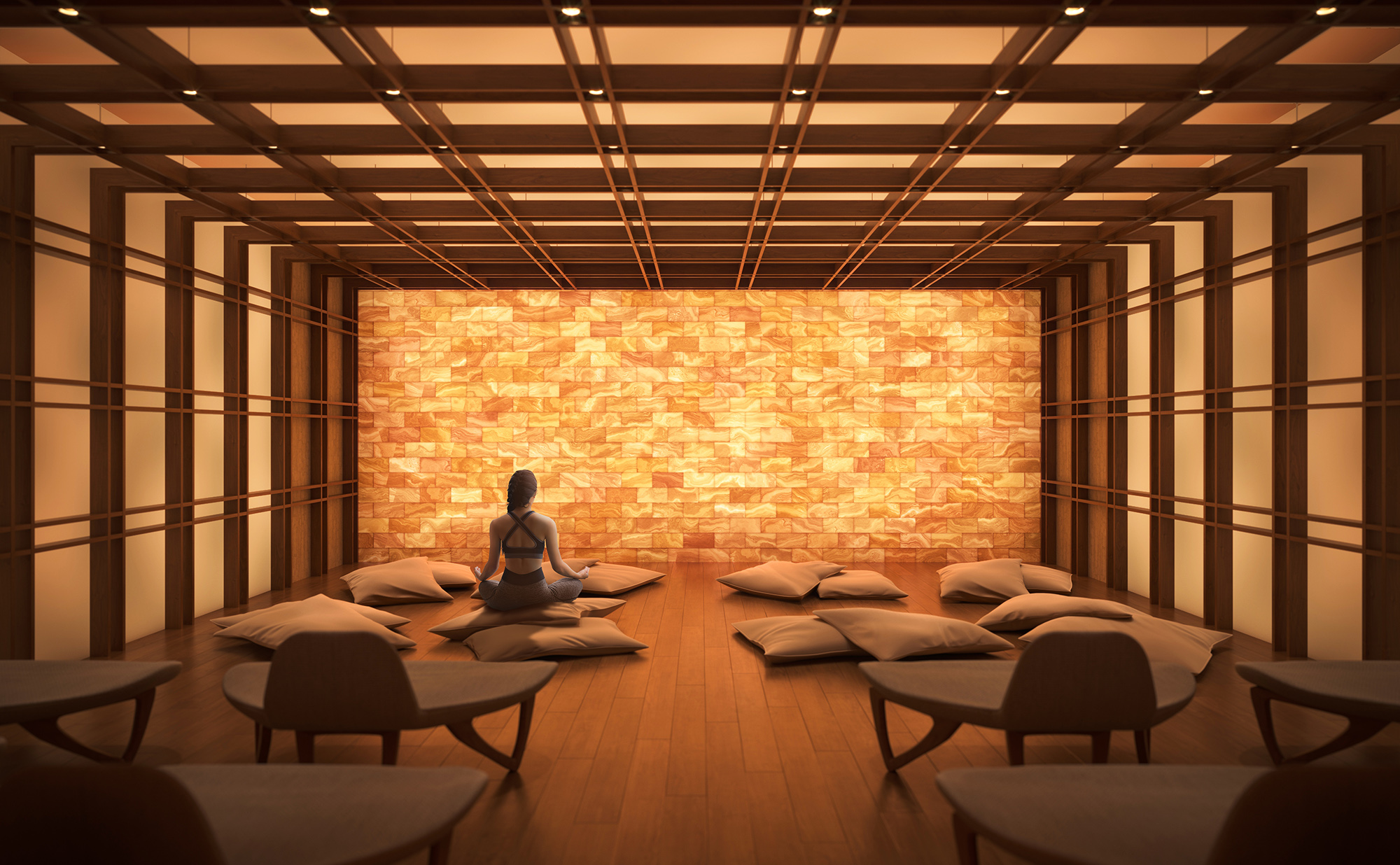
***
Sabine Grimes keeps a photo album of defunct amenity spaces. As founder of the interior design group Unison, she frequently visits residential towers years after residents have moved in, to help reimagine underutilized areas. “Virtual golf is one,” she says. “There is usually only one resident in 3,000 that plays—and the walls are totally damaged with golf balls hitting them.” The same applies to the obligatory massive bar in the condominium party room: “The reality is you never have a bartender, so you never use the bar.”
Meanwhile, in many complexes, there’s not enough space to accommodate trends like the explosion of online shopping—including food delivery—which requires storage space for parcels and refrigerators for groceries.
In a sense, then, Grimes measures the distance between the lives condo dwellers imagined and the ones they actually lead. “There are amenities and bells and whistles that have to be added to the marketing material for it to be appealing,” she says. “But the truth is, that word—‘appealing’—has no direct correlation with the happiness and satisfaction of residents.”
That can hit home when residents start scrutinizing the fees associated with their extras. When Shim was president of her condo board in Toronto, she developed a pet peeve about hot tubs: the one in her complex sat mostly empty, she says, while the community paid ongoing costs to keep it in compliance with Toronto Public Health rules. And when developers started putting in rock climbing walls on new projects, Shim notes, condo boards were quick to take them down because of the exorbitant insurance costs.

Grimes has learned in the course of her work that sometimes the simplest of amenities work best. “Plants are something appreciated all the time,” she says. “Oddly, they are not incorporated in the typical condominium.”
All of which makes the feel-good initiative between Vancouver House and World Housing look comparatively useful—more so, perhaps, than the fleet of German-engineered automobiles. Cynics might dismiss it as signalling aimed to please planning authorities, or a jaundiced public watching its cities transform for the benefit of the affluent.
But within months of Oram buying his condo in 2014, a Cambodian family had moved into the home linked to his purchase. It would be another five years before he moved into his own place at Vancouver House, by which time some of the original buyers had already sold off their units as investment flips. But he stayed, keeping a plaque much like the one inside the Cambodian home in his own suite “to feel connected” to the community he’d helped on the other side of the planet. “Their homes were basic,” he says, “but there were amenities for the new villages, like swings and a koi pond. You could see the difference it would make to be in a safe, sheltered environment.”
This article appears in print in the March 2021 issue of Maclean’s magazine with the headline, “The amenity wars.” Subscribe to the monthly print magazine here.